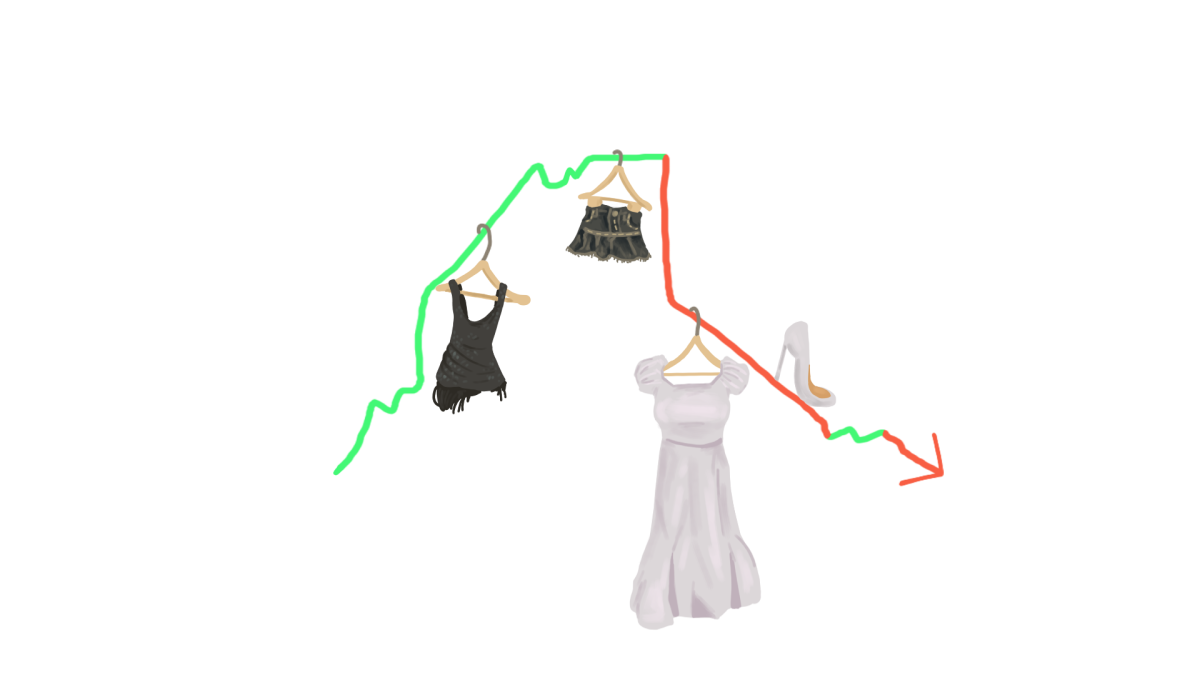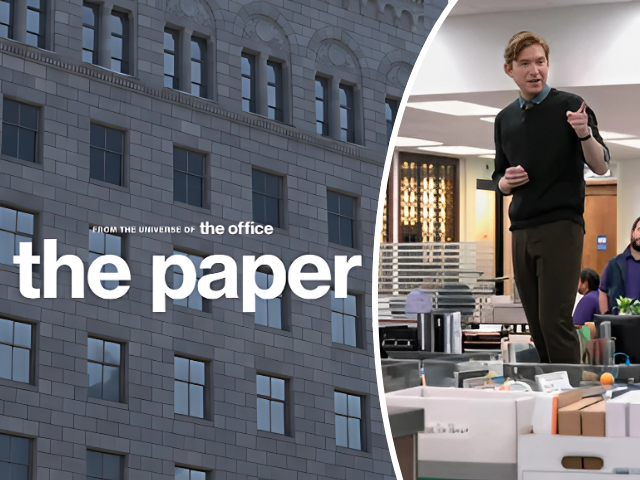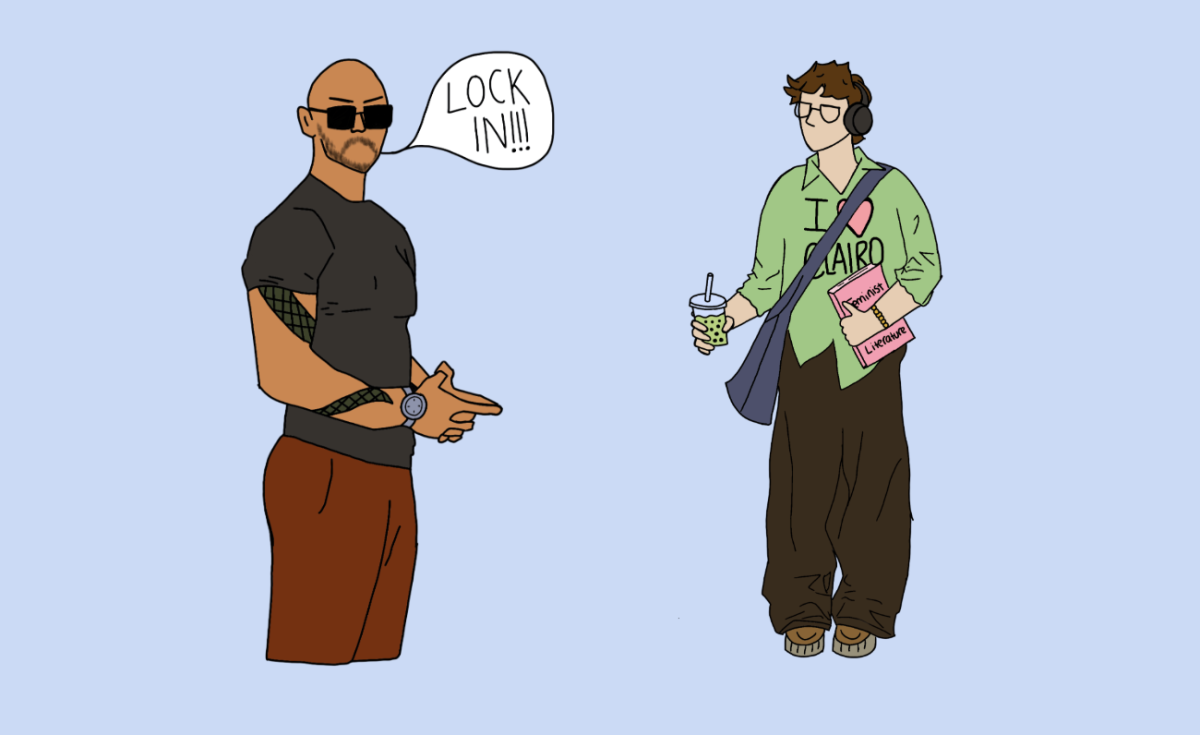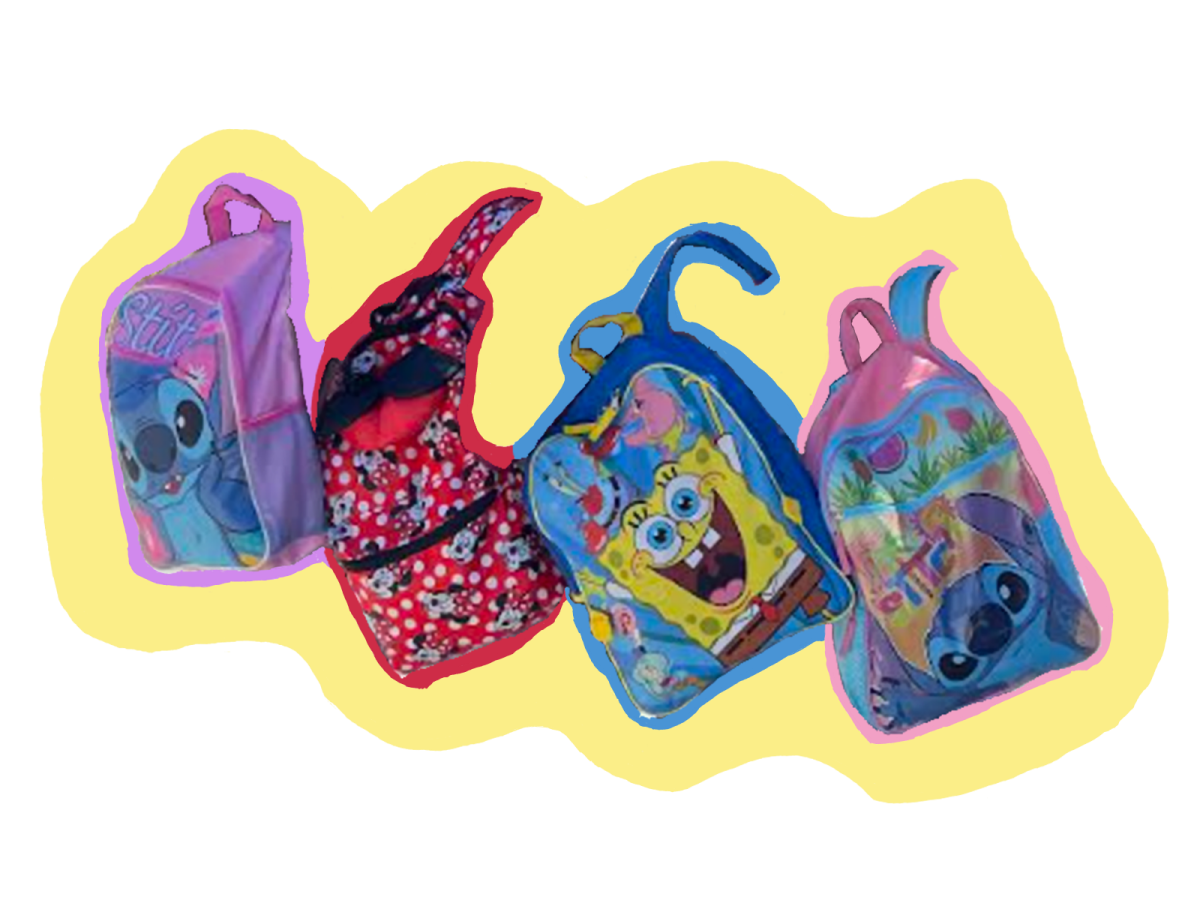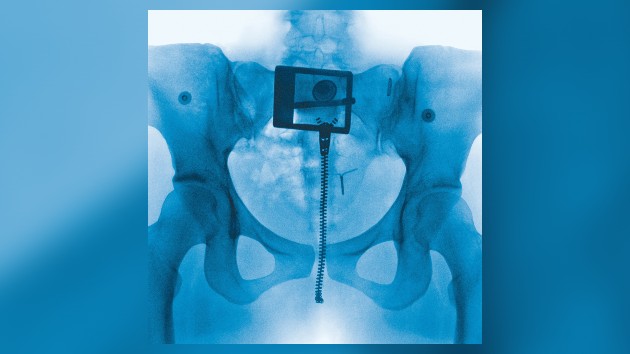Fashion trends are never random — whether influenced by a TV show, a movie or even a celebrity, they do not come out of nowhere. People often look to others for what they “should” be wearing, longing for a sense of community in clothes with others. However, unbeknownst to most people, most fashion trends are a result of their country’s economic status.
When inflation is on a rise, people dress more conservatively, and when the economy is prosperous, people tend to experiment more with different lengths (typically shorter) and patterns to show their confidence in their country’s direction. In 1926, economist George Taylor introduced the Hemline Index, which states that women’s clothing lengths fluctuate with the economy. This index is particularly evident in the “Roaring Twenties,” a time period of economic prosperity in the U.S. as a result of wartime production and trade. This time period showcased the large surge of consumer culture, and the flappers are a prime example of this index.
“During the 1920s, because the economy was doing so good, people had a lot of disposable income to spend, so they would buy new clothes, especially women,” FHS junior Clara Medley said. “[For example,] the flappers, which had a boyish silhouette and showed more skin.”
On the flip side, times of economic uncertainty have shown a return to either traditional clothes or clothes that are valued for their affordability and practicality more than stylistic or innovative value.
“During the Great Depression, people stopped buying new clothes and started thrifting instead,” FHS AP U.S. History teacher David Rognas said. “Companies that would sell big bags of flour would put floral prints on the bags so people could make clothes out of them for their young children.”
Another example of the Hemline Index is in the 1960s, after World War II, where the country saw an increase in the use of mini skirts. Additionally, “Y2K” fashion saw widespread use of miniskirts, but after the economy crashed in 2008, they were replaced with longer, less revealing clothing with the return of midi and maxi dresses.
Similar to the Hemline Index are the High Heel Index and the Lipstick Index. The former explains the increase in usage of taller high heels when the economy is bad, and the latter explains the increase in lipstick usage during the same time. When the financial crisis of 2008 began, runways saw a dramatic return of the sky-high heels, and many women followed suit, purchasing towering stilettos as a form of escapism from the harsh reality of uncertainty. At the same time, women also began purchasing singular high-end lipsticks as small, practical and long-lasting luxury items. For many, these comparatively small purchases were the only forms for indulgence they could justify at the time. And contrary, for those living through a time of prosperity, they wanted to honor their confidence with innovation and taking risks.
So, next time you watch a movie filmed during a financial crisis or boom, check the height of the actress’s stilettos, the length of her skirt or her choice of lipstick. You might be able to guess the country’s economic status based on the wardrobe choice.


